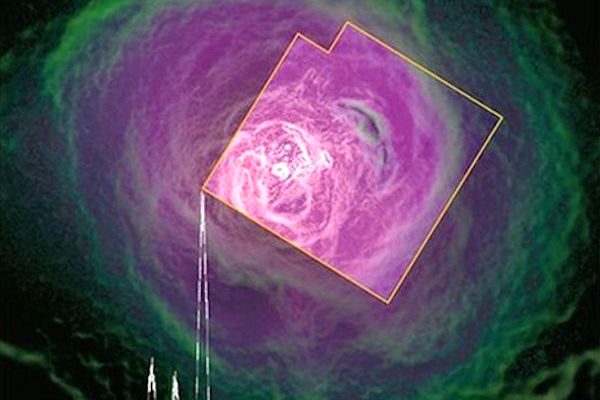Hitomi satellite - An image from Japan’s black hole-hunting satellite left a staggering surprise before it dropped out of contact and eventually went silent as it drifted 250 million light years away.
The image is impressive, detailing a remarkable outline, as it measured the X-ray activity of gases at the Perseus cluster’s center. The Hitomi takes photos up to 50 times better than previous devices.
The Perseus cluster is a large cluster of galaxies, which is one of the most massive objects in the known universe. It contains thousands of galaxies immersed in a vast cloud.
As the satellite spiraled out of control, it returned data of the cluster. Astronomers reviewed the data and discovered that the cluster’s core had a “quiescent atmosphere,” with fewer stars than previously known.
Researchers also found hot gases between galaxies travelling at 340,000 mph, which is a slower speed than previously known. The data, published in Nature, reveals a supermassive black hole is continuously moving the gases so they cannot form new stars.
The center black hole hole “is vigorously stirring the gas within a collection of galaxies to keep star formation at a minimum,” Space.com reports.
“The gas is relatively stable and isn’t getting pushed around as much as we thought,” Brian McNamara, a professor of physics and astronomy, wrote in a report. “Hitomi’s Perseus observation tells us that we can probably weigh distant galaxy clusters to greater accuracy than we can weigh our own Milky Way galaxy.” NcNamara, who works at the University of Waterloo in Ontario, Canada, was part of the research team.
Hitomi’s revolutionary Soft X-ray Spectrometer (SXS) was built by Goddard scientists, according to NASA’s Scientific Visualization Studio website.
“The Perseus observation provides a tantalizing glimpse of the tremendous advance that X-ray microcalorimetry will bring to astrophysics. U.S. researchers pioneered development of the technology in the 1980s, but Hitomi’s all-too-brief run represents its most successful space application to date,” the website reads. The findings on gas velocities are said to be “of particular interest to astrophysicists.”
Hitomi was launched by the Japanese Aerospace Exploration Agency (JAXA) in February with the goal of studying massive black holes. But on March 27, just as the satellite was set to begin its mission, the space agency lost all contact with it.
Hitomi was the sixth x-ray satellite designed to explore how matter behaves with black holes. The instrument itself was developed by scientists at NASA’s Goddard Space Flight Center, which is a breakthrough in tools that scientists use to study the universe.











